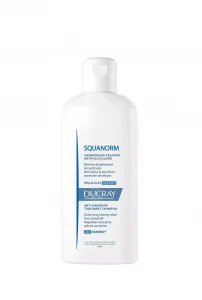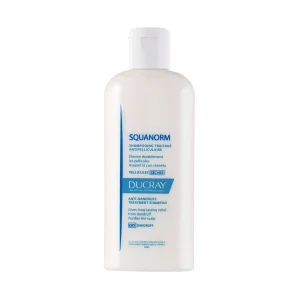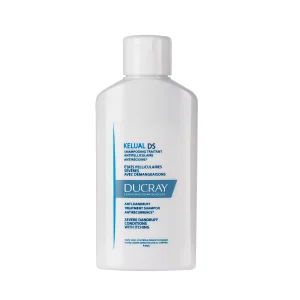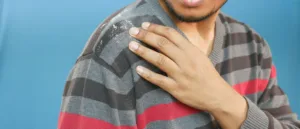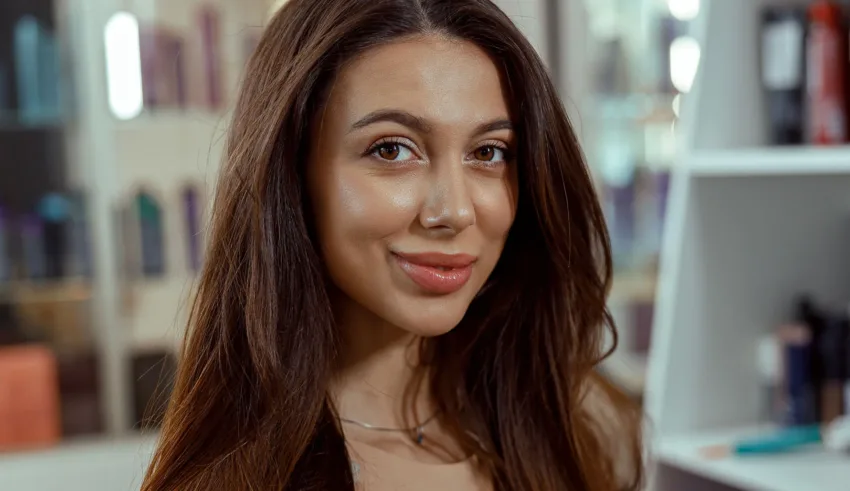
Dandruff won’t go away? You may have tried everything, but the stubborn white flakes seem to have made homes on your scalp. It’s embarrassing and it can be discouraging, but don’t worry. When this flake problem doesn’t seem to be going away, it’s a good idea to take another look at your hair care regimen before you give up. Here we explain the do’s and don’ts of getting rid of dandruff, and how to get a fresher scalp in collaboration with the dermatologist Dr. Patricia Oliveira.
DO’s
1- DO: Brush your hair regularly.
If you brush your hair regularly, dead skin cells and oil won’t build up on your scalp, making it flaky. Regular hair brushing also increases blood circulation, which keeps the scalp healthier and better nourished. Regular brushing also massages your hair, improving its growth and giving it a better texture.
2- DO: Limit the use of styling products.
Styling your hair with an array of hair products may seem glamorous, but it can be very damaging to your hair and scalp in the long run. The Mayo Clinic has confirmed that heavy use of certain styling products can make the scalp more oily, which leads to increased dandruff. So it’s best to use them as little as possible.
3- DO: Exfoliate your scalp.
The skin on your scalp needs to be exfoliated regularly, just like the skin on your face and other parts of your body. Exfoliation gets rid of dead skin cells that accumulate on the surface of the scalp. Once these dead cells are removed, fresh cells take their place, giving the skin a nourished and healthy look. By using the right exfoliating products, you can get rid of all that top layer of dry skin.
4- DO: Opt for an anti-dandruff shampoo.
Without proper care, dandruff can get worse. But don’t panic, you’re not doomed to be plagued by those white flakes for the rest of your life. Using a quality anti-dandruff shampoo is a good start to treating this hair and scalp problem.
Shampoos containing zinc and sulfur are the most effective against dandruff. If you only suffer from a dry, flaky scalp, a salicylic acid shampoo will do the trick. Use those with zinc pyrithione, ketoconazole, and selenium sulfide if you also suffer from irritation and redness.
According to Dr. Patricia Oliveira, the frequency of shampooing needed to control dandruff varies from person to person. Every other day is recommended for almost all patients, but others will need to shampoo more frequently, even daily.
Since we know you’re eager to shop around, we’ve rounded up the best dandruff shampoos with proven success below.
For oily dandruff:
Ducray Squanorm Anti-Dandruff Treatment Shampoo – Oily Dandruff
For dry dandruff:
Ducray Squanorm Anti-Dandruff Treatment Shampoo – Dry Dandruff
For dandruff caused by seborrheic dermatitis:
Ducray Kelual DS Treatment Shampoo
5- DO: Use the shampoo only on the scalp.
Anti-dandruff shampoos prevent excess oil. This means that they dry out the scalp and if you apply them to your hair, it will dry out as well. Therefore, special anti-dandruff shampoos and treatments should be applied only to the scalp and not to the hair.
6- DO: Rinse your hair after shampooing.
After shampooing, rinse your hair thoroughly to remove all the shampoo and conditioner. If shampoo is left on the scalp, it can become dry, irritable, and flaky.
7- DO: Change your diet.
Unhealthy eating habits and poor nutrition can also be the cause of dandruff. Foods high in carbohydrates are among those that accelerate the problem. Dandruff is also a result of an oily scalp. Dairy products and sugary foods can be the cause. So try to control your carbohydrate and sugar intake if you suffer from dandruff.
8- DO: Know the difference between dandruff and dry scalp.
These two conditions are closely related, but not necessarily co-dependent. To tell them apart, look at the condition of your scalp: a dry scalp is just one sign of a dandruff-prone scalp, and it can also be triggered by an oily scalp.
According to Dr. Patricia Oliveira, what many people don’t know about dandruff is that while flakes can be mistaken for dryness, dandruff only appears on oily scalps.
DON’Ts
1- DON’T: Think dandruff is contagious.
This is a myth we all heard in school and still believe today. The news is: It’s not. In fact, we ALL have this bug on our scalp, so everyone is susceptible to dandruff. Malassezia is part of the skin flora of the scalp and only causes dandruff when the scalp’s natural barrier is weakened.
2- DON’T: Scratch your scalp.
Dr. Patricia Oliveira points out that when you have dandruff, your scalp may look scaly or red and be itchy or irritated.
Those who suffer from this problem know how pleasant a good scalp scratch feels. But did you know that scratching only accelerates the problem? Scratching satisfies the itch for a short time, but it will only make the irritation and inflammation worse later on. Even worse, if you have long or sharp nails, scratching can also lead to open wounds on your scalp, increasing the risk of infection.
Even when shampooing, we often lather and scrub too hard. Make sure not to be too abrasive and gently massage the scalp during each shower.
3- DON’T: Leave your hair wet.
Sleeping with wet hair is bad news for your scalp. Wet strands are more vulnerable to damage and breakage and more easily collect sweat and dirt on the scalp, which can cause itching and flaking.
4- DON’T: Ignore seborrheic dermatitis.
Seborrheic dermatitis is another cause of dandruff. Oily flakes and scalp irritation are symptoms of seborrheic dermatitis. Don’t procrastinate on this skin condition and seek medical attention to treat dandruff.
5- DON’T: Use hair products without testing them.
The hair products you use also play an important role in the development and prevention of dandruff. Your scalp and hair will react differently to shampoo and conditioner. Don’t start using personal care products until you’ve tried and tested them.
A word from The Dermo Lab
Keeping in mind the do’s and don’ts will strengthen your fight against dandruff and you’ll be dandruff-free and feeling fresh in no time.
Dr. Patricia Oliveira says there is no cure for dandruff. Most people will have to manage the symptoms over the long term. Treating dandruff with a special shampoo can help manage your condition and prevent itching and flaking.
If the problem persists or worsens, make an appointment with a dermatologist as soon as possible. It’s best to identify the source of the problem early on and then work on resolving it. Be consistent with the hair care routine designed specifically for your needs. Hair treatments take a little time to show results, but if you put in the time and effort, you will prevent the problem from developing further and eventually eliminate it.
